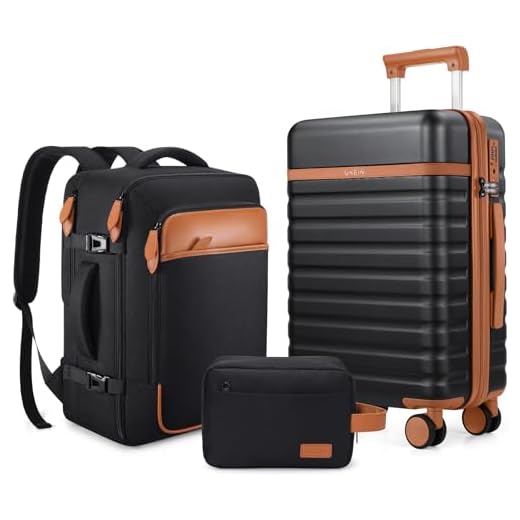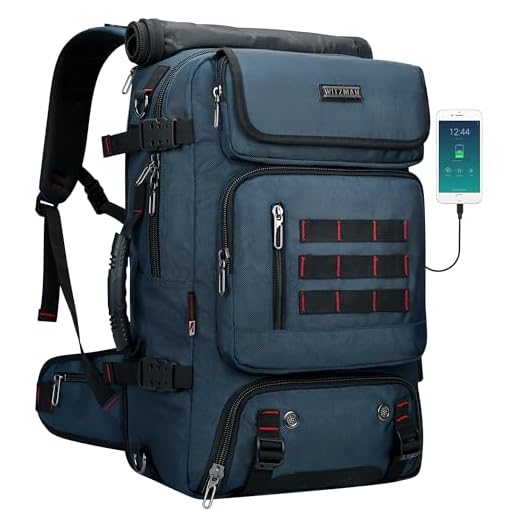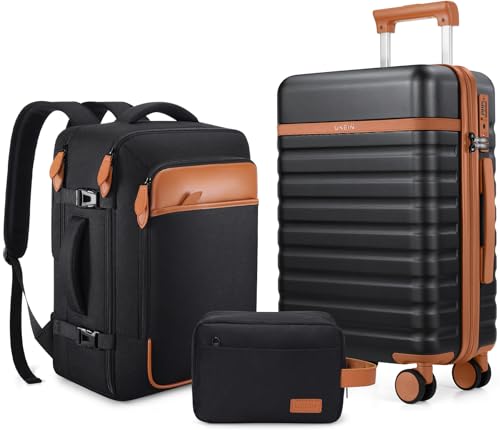



Typically, airlines permit one checked bag and one carry-on for travelers, with the checked bag weighing no more than 23 kg (50 lbs) and dimensions not exceeding 158 cm (62 inches) in total (length + width + height). Always verify specific limits with your airline, as each carrier may have distinct regulations.
The carry-on item usually has a weight capacity of around 7-10 kg (15-22 lbs). Common dimensions range from 55 cm x 40 cm x 20 cm (22 in x 16 in x 8 in) to slightly larger specifications. Items such as laptops or bags containing personal belongings can often be taken onboard without extra charges.
For those flying in premium classes, extra allowances may be available, including additional pieces and higher weight limits. Additionally, certain airlines provide special support for scholars, allowing more generous terms for educational materials or equipment, so be sure to inquire about such options during ticket purchase.
In case of exceeding weight or dimension restrictions, additional fees typically apply per kg or per extra bag. It is advisable to prepare ahead and weigh items before departure to avoid unexpected charges at the airport.
Restrictions on Baggage for Global Travel
Typically, passengers traveling abroad can check in one bag weighing up to 50 pounds (23 kg) without incurring extra fees. Carry-on items, limited to one piece, usually must fit within dimensions of 22 x 14 x 9 inches (56 x 36 x 23 cm).
Some airlines offer additional allowances for students through specific programs or special rates, allowing them an extra checked item or a higher weight limit. It’s advisable to confirm details with the carrier prior to the trip.
When contemplating what to bring, prioritize essential items: educational materials, personal documents, and necessary clothing. Excess items can incur fees, often ranging from $30 to $200 depending on the airline and distance traveled.
American airlines may provide discounts or special offers intended for learners, while others partner with educational institutions, leading to increased baggage limits. Researching airline policies will yield more favorable travel outcomes.
Some carriers may impose stricter protocols concerning sporting equipment or musical instruments. It’s prudent to contact the airline regarding specific items of this nature.
Finally, consider travel insurance that covers lost, delayed, or damaged belongings, providing further peace of mind during your move abroad.
Understanding Airline Baggage Allowances
Review airline policies beforehand, as requirements differ significantly between carriers. Generally, a common structure consists of one or two pieces of checked cargo and a carry-on item.
| Airline | Checked Items | Carry-On Specifications |
|---|---|---|
| Carrier A | 1-2 pieces, max 23kg each | 1 piece, max 7kg, 55x40x20 cm |
| Carrier B | 2 pieces, 32kg per piece | 1 piece, 10kg, 56x45x25 cm |
| Carrier C | 1 piece, max 25kg | 2 pieces, max 7kg each, 40x30x20 cm |
| Carrier D | 2 pieces, 20kg each | 1 piece, max 8kg, 55x35x25 cm |
Additional fees may apply for overweight or extra cargo. Review dimensions precisely; exceeding limits may lead to denial of the item at check-in. Carry-on allowances usually involve specific dimensions; bags exceeding them can result in having to check those items.
Special items such as musical instruments, sports equipment, or medical supplies may have unique policies. Explicitly inquire about these in advance to circumvent unexpected costs. Security regulations may restrict certain objects in carry-on bags, so always verify prohibited items before packing.
For travel convenience, label all possessions with identifiable information. Organize important documents separately to facilitate a smooth checking process.
Specific Size and Weight Limits for Carry-On Items
Typically, airlines permit carry-on dimensions of approximately 22 x 14 x 9 inches (56 x 36 x 23 cm), including handles and wheels. This measurement can vary, so it’s advisable to verify specific policies of each carrier.
The weight restriction generally falls between 15-22 pounds (7-10 kg). Exceeding this limit may result in additional charges or the necessity to check the bag.
Variances by Airline
For example, low-cost carriers might enforce stricter regulations compared to major airlines. It’s crucial to check the airline’s website or contact customer service beforehand for precise requirements.
Prohibited Items
Remember to review lists of forbidden articles, such as liquids exceeding 3.4 ounces (100 ml) and sharp objects. Adhering to these guidelines ensures a smooth boarding experience.
Checked Baggage Policies for International Student Flights
Research each airline’s specific policies for checked items, as they often vary. Typically, students can transport one or two pieces, each weighing from 20 to 32 kilograms. Always check for updates and changes before departure.
Common Baggage Allowances
- United Airlines: 1 piece up to 23 kg for economy class.
- British Airways: 2 pieces with a maximum weight of 23 kg each.
- Lufthansa: 1 to 2 pieces, max 23 kg each, depending on the fare class.
Special Considerations
Students should consider extra fees for overweight or additional pieces. Some airlines might offer discounts for educational travel. Utilize student ID for potential savings when booking. Always pack essential items in a carry-on to avoid loss.
For those seeking outdoor activities during their trip, consider bringing compact gear. Check out the best quality outdoor folding chairs with umbrella for comfort. Furthermore, unexpected events can occur during travels; understanding how a car accident can impact your life is crucial.
Exemptions and Discounts for Student Travelers
Many carriers provide discounts or special allowances for young travelers. Students should check with their particular airline to uncover potential benefits. Some companies offer reduced fees for excess baggage under specific promotional programs.
Frequent flyer programs may also grant increased capacity or additional items, beneficial for those who travel often. Joining such programs may yield perks like priority boarding or additional checked bags without extra charge.
Several airlines participate in partnerships with educational organizations, offering special rates on tickets and packing allowances. Connecting with university travel departments can reveal exclusive deals.
Additionally, consider travel agencies specializing in student trips. They often have established relationships with airlines, resulting in unique offers tailored to academic travelers. Early bookings usually come with better rates and terms.
Students may qualify for exemptions based on their ticket class; business or premium economy fares can come with heightened allowance. Always review fare agreements carefully, as some rates are not clearly advertised.
Ultimately, direct communication with customer service representatives can yield insights into lesser-known perks or early-bird discounts. Frequent inquiries can lead to advantageous arrangements.
Tips for Packing Efficiently Within Luggage Limits
Roll clothing instead of folding it. This method saves space and reduces wrinkles, allowing for more items in a tighter area.
Utilize packing cubes or compression bags. These tools help organize belongings and maximize the volume of each bag.
Wear bulkier items during transit. Layers such as jackets and boots take up significant space in bags, so keep them on while traveling.
Limit shoes to two pairs: one casual and one formal. Shoes occupy substantial volume, so choose versatile options that match various outfits.
Opt for travel-sized toiletries or solid alternatives. Liquid restrictions often apply, and minimizing the size of personal care products conserves space.
Prioritize essentials by creating a checklist. Focus on versatile clothing that can be mixed and matched to create multiple outfits.
Use every inch of space; fill shoes with socks or small items. This simple trick maximizes the area within each pair.
Minimize electronics and books. Consider e-readers or digital downloads to limit the weight of physical items.
Replace heavy items with lighter alternatives. For example, choose quick-dry fabrics for clothing and lightweight materials for bags.
Investigate travel restrictions specific to the airline. Each carrier has different rules regarding weight and dimensions, so stay informed.
Stay within weight limits to avoid extra fees. Use a portable scale at home to check against the airline’s regulations.
What to Do if Your Luggage Exceeds Allowances
If your baggage surpasses the established limits, consider the following steps:
1. Check Your Airline’s Policies
Review the guidelines outlined by your carrier concerning excess baggage. Charges vary, and some airlines may offer a flat fee or cost per kilogram. Understanding these details helps avoid unexpected expenses.
2. Repack Strategically
- Distribute weight between checked items and carry-ons.
- Wear heavier clothing during travel to minimize weight.
- Remove non-essential items like books or unneeded electronics.
3. Consider Shipping Options
If excess weight is unavoidable, assess shipping your belongings via courier services. This may be more economical than paying for extra baggage fees directly at the airport.
4. Share with Travel Companions
Coordinate with friends or family traveling with you. Sharing the load can significantly reduce individual baggage weight and potential penalties.
5. Utilize Local Resources
Upon reaching your destination, purchase items that you can leave behind or donate. This can lighten your load if you anticipate needing to return with less.
6. Plan Ahead for Return Travel
If returning home, consider the same limits and options to avoid extra fees. Shipping or arranging to send items back can save money.







